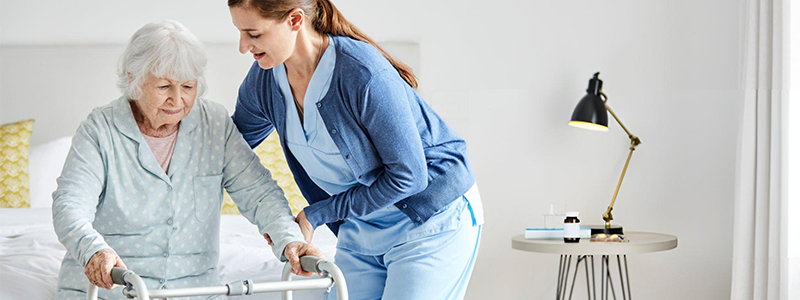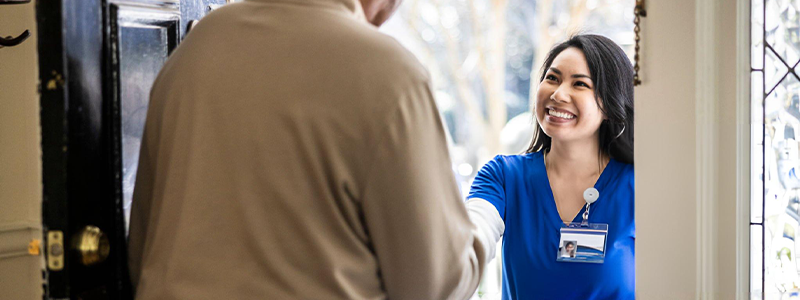In recent years, the healthcare industry has witnessed a transformative shift towards providing medical aid at home. With advancements in technology and a greater focus on patient-centric care, medical services can now be delivered conveniently to the comfort of one’s home. This trend has gained popularity due to its numerous benefits, making it a viable alternative to traditional healthcare settings. In this blog, we will explore the different medical aids available at home, ranging from lab tests to doctor visits and the presence of nurses and caregivers. Let’s delve into the advantages of embracing medical aid at home and how the healthcare industry is expanding these essential services.
Lab Test at Home: Enhancing Convenience and Accessibility
Comfort and Relaxation: Being tested at home ensures a comfortable and relaxed environment, reducing anxiety and stress associated with medical procedures.
Increased Compliance with Testing: Patients are more likely to comply with recommended tests when they can be conducted at home, leading to early detection and better management of health conditions.
Ideal for Elderly and Disabled Patients: Home lab tests are particularly beneficial for elderly patients or those with mobility issues, as they can undergo essential diagnostic tests without leaving their homes.
Fast and Efficient Results: With advancements in technology and streamlined processes, home-based lab tests offer rapid and accurate results, enabling healthcare providers to initiate timely treatments if necessary.
Doctor Visit to Home: Personalized Care and Attention
Reduced Exposure to Infections: Home visits by doctors help minimize the risk of exposure to contagious illnesses present in healthcare facilities. Patients with weakened immune systems or vulnerable health conditions can receive medical attention without being exposed to potential infections.
Enhanced Treatment Compliance: Patients tend to be more compliant with their treatment plans when receiving care at home. They are more likely to follow prescribed medications, lifestyle changes, and rehabilitation exercises, leading to better treatment outcomes.
Preventive Care and Early Intervention: Doctors conducting home visits can assess the patient’s living environment and lifestyle factors, allowing them to offer personalized preventive care advice. Early intervention in potential health issues can help prevent the progression of diseases and improve long-term health.
Time and Cost Savings: Home visits save patients the time and expense involved in traveling to a healthcare facility. It is particularly advantageous for those with limited mobility or residing in remote areas, as they can access medical expertise without the need for extensive travel.
Comfort and Familiarity: Receiving medical care in the familiar surroundings of one’s home can alleviate anxiety and stress associated with medical visits. This relaxed environment promotes a better doctor-patient relationship and facilitates open communication.
Nurse at Home: Skilled Medical Assistance and Monitoring
Having a nurse attend to patients at home is immensely beneficial, especially for those recovering from surgery, managing chronic illnesses, or requiring postnatal care. Home-based nursing services encompass a wide range of medical support, including wound care, medication administration, injections, and vital sign monitoring. Additionally, nurses play a pivotal role in educating patients and their families about proper healthcare management, empowering them to take better care of their health between medical visits. This professional assistance significantly reduces the chances of hospital readmissions and improves the overall quality of life for patients.
Assistance with Activities of Daily Living: Caregivers provide valuable support with daily activities such as bathing, dressing, meal preparation, and mobility assistance, enhancing the patient’s overall well-being and independence.
Emotional and Mental Well-being: The presence of a caregiver at home offers emotional support and companionship, reducing feelings of loneliness and depression, particularly among elderly or homebound individuals.
Respite for Family Caregivers: In cases where family members provide primary care, having a caregiver at home offers much-needed respite, allowing family caregivers to take breaks and tend to their own well-being.
Fall Prevention and Home Safety: Caregivers are trained to identify potential hazards in the home and implement safety measures, significantly reducing the risk of falls and accidents, especially for elderly patients.
Medication Reminders: Caregivers ensure that patients take their medications as prescribed, preventing medication errors and complications related to missed doses.
The demand for medical aid at home has grown significantly as patients and their families seek a more patient-centric approach to healthcare. The availability of lab tests, doctor visits, nursing services, and caregivers at home has revolutionized the way medical care is delivered, making it accessible to a broader spectrum of patients. As the healthcare industry continues to embrace this transformative shift, patients can look forward to a future where their health and well-being are prioritized without compromising on comfort and dignity.



